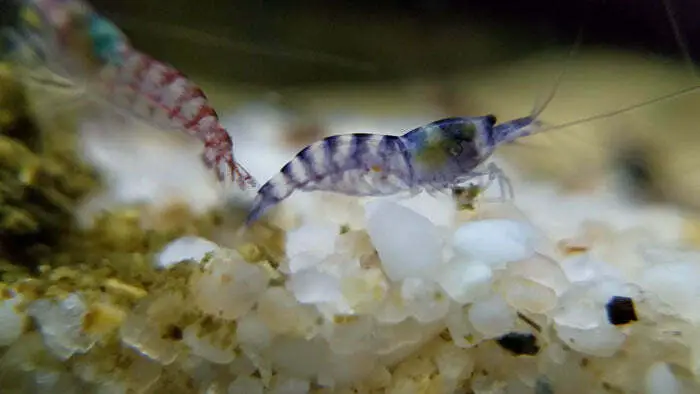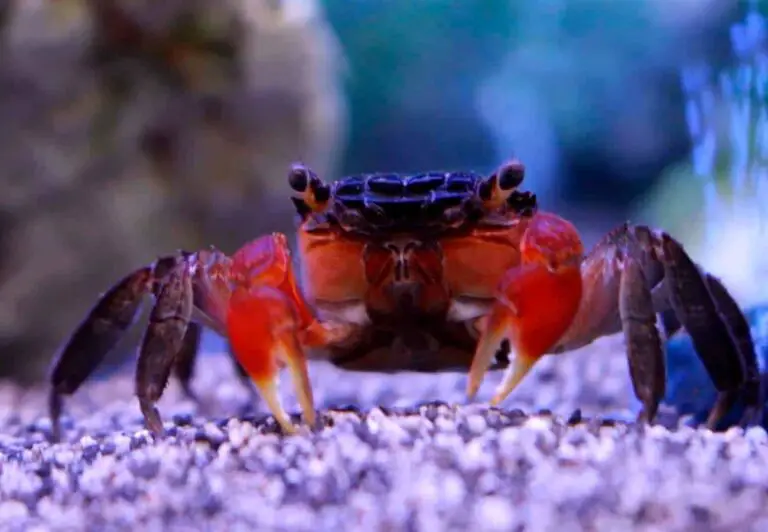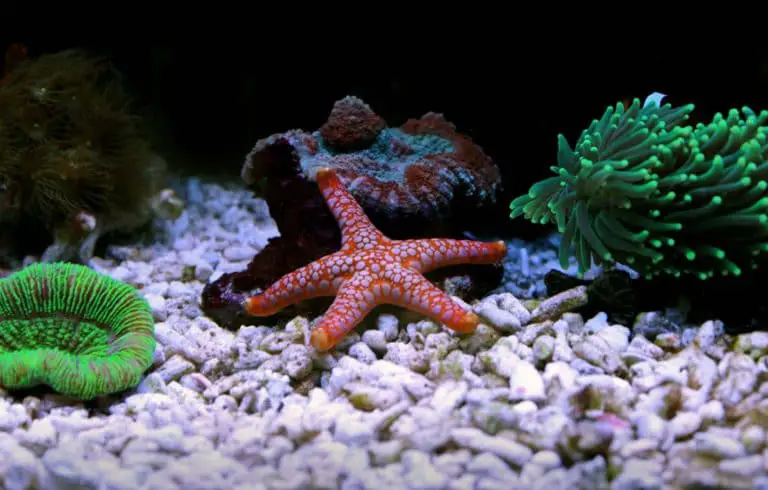Should I Leave Aquarium Light on Overnight? Unveiling The Truth
Leaving the aquarium light on overnight is not necessary as it can disrupt the natural light and dark cycle for fish, potentially causing stress and health issues. It is recommended to have a regular light schedule, providing around 8-12 hours of light per day, mimicking the natural lighting conditions for the fish and ensuring they have enough time to rest in darkness.
This will help maintain a healthy and balanced environment for the aquarium inhabitants. However, it is important to consider certain factors such as the type of fish and plants in the aquarium, as some may require specific lighting conditions. Consulting with a knowledgeable aquarium expert can provide further guidance for the individual needs of your aquatic ecosystem.

Credit: www.aquatic-eden.com
The Importance Of Aquarium Lighting
Aquarium lighting plays a crucial role in maintaining a healthy and visually appealing aquatic environment. It not only enhances the aesthetics but also mimics natural light cycles. Providing the right amount of light for your aquarium is essential for the well-being of your fish and plants.
Overexposure to light can lead to algae overgrowth and stress in your fish, while insufficient light can hinder plant growth. By following natural light patterns, with a period of darkness during the night, you can replicate their natural habitat. This helps establish a healthy environment and promotes the growth of your aquarium’s inhabitants.
Therefore, it is recommended to turn off the aquarium light at night to mimic the natural light cycles and provide a suitable environment for your aquatic creatures.
Should I Leave Aquarium Light On Overnight?
Leaving the aquarium light on overnight has its pros and cons. The brightness enhances viewing pleasure, and it encourages natural behavior in fish. On the other hand, it can promote algae growth and disrupt the sleep and circadian rhythm of the fish.
Additionally, overheating and potential damage to the tank can occur. To strike a balance, finding the optimal lighting schedule is crucial. By considering the needs of both the fish and the aquarium, you can create an environment that promotes their well-being.
It’s important to remember that each aquarium is unique, so experimentation may be necessary to determine the ideal lighting duration. Ultimately, the decision to leave the aquarium light on overnight should be based on the specific requirements of your aquatic ecosystem.
Expert Opinions:
Aquarium professionals and experts have varying viewpoints on this topic:
- Pro-Lighting Experts: Some experts argue that leaving the lights on overnight can be beneficial, especially for aquariums with live plants. They emphasize the extended photosynthesis period and the potential positive impact on plant health.
- Anti-Lighting Experts: Others advocate for providing a natural day-night cycle for fish and aquatic life. They believe that extended lighting can disrupt the natural rhythms and rest patterns of the inhabitants.
Aquarium Light Schedule
Creating a suitable aquarium light schedule is essential to mimic natural lighting conditions, promote healthy growth, and maintain a stress-free environment for your aquatic inhabitants. Here’s a general guide to help you design an effective aquarium light schedule:
1. Determine the Type of Aquarium: Consider whether you have a freshwater or saltwater aquarium, as well as the types of plants and fish you’re keeping. Different species have varying lighting requirements.
2. Set the Duration: In general, aim for around 8 to 10 hours of light per day. This mimics a natural day-night cycle and prevents excessive algae growth.
3. Split the Day into Segments: Divide the lighting period into distinct segments to replicate dawn, full daylight, and dusk. This helps ease transitions for your aquatic inhabitants.
4. Gradual Lighting Changes: Avoid abrupt lighting changes, as they can stress fish and plants. Use timers that provide gradual transitions between low light and high light periods.
5. Morning ‘Sunrise’ Phase: Start with a dim, blue-toned light that simulates the gradual increase in natural sunlight during dawn. This helps reduce stress for your fish.
6. Midday ‘Full Sun’ Phase: This is the peak of your lighting schedule. Set the lights to their highest intensity to mimic midday sunlight. This is when plants photosynthesize most efficiently.
7. Afternoon ‘Dusk’ Phase: Gradually decrease the intensity and shift the light spectrum to a warmer tone. This simulates the transition from daylight to dusk.
8. Nighttime Darkness: Allow your aquarium to experience complete darkness during the night. This is crucial for fish to rest and recharge.
9. Consider Plant Needs: If you have live plants, they typically require more light. Ensure that the high-light period coincides with the time when you’re most likely to be around to enjoy the view.
10. Adjust for Algae Control: If algae becomes an issue, reduce the lighting period or intensity. Experiment until you find the right balance that discourages algae growth while promoting plant health.
11. Monitor and Adjust: Regularly observe the behavior of your fish and the health of your plants. Adjust the lighting schedule if you notice any signs of stress or imbalances.
Sample Aquarium Light Schedule:
- Morning (6:00 AM – 8:00 AM): Ramp-up to full intensity over 1 hour.
- Midday (8:00 AM – 3:00 PM): Full intensity lighting.
- Afternoon (3:00 PM – 5:00 PM): Gradual dimming and shift to warmer light.
- Night (5:00 PM – 6:00 AM): Complete darkness.
Remember, this schedule can be adjusted to suit your specific aquarium setup and the needs of your fish and plants. Regular observation and fine-tuning will help you create the ideal lighting environment for your aquatic ecosystem.
Frequently Asked Questions:
Should I Leave My Aquarium Light On At Night?
Leaving your aquarium light on at night can disrupt the natural day and night cycle for your fish. It is advisable to turn the light off at night to mimic their natural habitat.
How Many Hours Can Aquarium Lights Be On?
Generally, aquarium lights should be on for 8 to 10 hours a day. This duration will allow your fish to have a proper day and night cycle, ensuring they get enough rest and maintain a healthy routine.
Can Leaving The Aquarium Light On Stress Fish?
Yes, leaving the aquarium light on for extended periods can stress fish. They need a balance of light and darkness to establish their natural circadian rhythm. Providing them with proper periods of darkness is essential for their well-being.
What Happens If I Leave Aquarium Light On 24/7?
Leaving the aquarium light on 24/7 can lead to algae growth, temperature fluctuations, and stress for the fish. It is essential to maintain a light and dark cycle to create a healthy environment for your aquatic pets.
Can Fish Sleep With The Aquarium Light On?
Fish require darkness to get proper rest and sleep. Keeping the aquarium light on can disrupt their natural sleep patterns and lead to stress and health issues. It is best to turn off the light at night to provide them with a suitable sleeping environment.
Can I Use A Timer For My Aquarium Light?
Using a timer for your aquarium light is highly recommended. This way, you can establish a consistent lighting schedule that mimics the natural day and night cycle for your fish. A timer will ensure your fish get the right amount of light each day without any hassle for you.
Conclusion
Deciding whether to leave your aquarium light on overnight depends on several factors. Direct exposure to light for extended periods can disrupt the natural day-night cycle for your fish, affecting their sleep patterns and overall health. While some fish, like nocturnal species or those from deep sea environments, may benefit from a dim light during nighttime hours, most fish will do better with a regular light schedule that mimics natural daylight.
It is important to consider the needs of your specific fish species, as well as the presence of live plants or coral in your aquarium. Ultimately, finding a balance between providing enough light for your aquatic ecosystem to thrive and allowing your fish to rest is key.
Regular observation and monitoring of your fish’s behavior can help determine the best lighting schedule for your aquarium. Remember, maintaining a healthy and balanced environment should be the top priority in caring for your fish.




